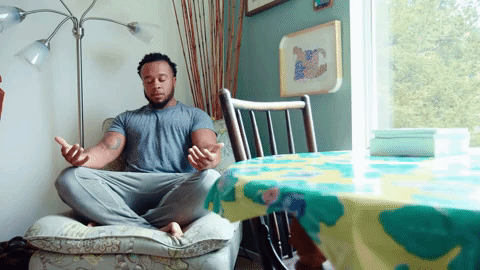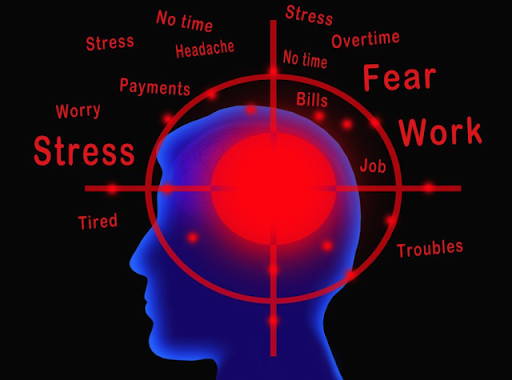5 Mental Training Techniques for Athletes
Witnessing elite athletes qualifying for the highest levels of sports performance occurs every four years. We also see elite athletes perform at the highest levels yearly in their chosen sport. We are all spectators and see the surface level of winning. We see the hand raised, we see the athletes on the top of a podium, we see them receive medals, and we see them win championships.
But in all reality what does that mean?

We know a lot goes into getting to that point. We know there is a ton of physical training. We know that there is a ton of technical preparation. But something that we neglect to observe, and even train at times, is the mental hacks athletes use to get to the top and perform at elite levels in sport and competition.
1. Visualize The Macro Perspective
Visualization goes a long way. We need to think about the end result and the end goal. We need to constantly remind ourselves of what that end goal is and what we want to achieve as an athlete. We need to vocalize this to the coach. We need to answer and see where we want to be at the end of all the training.

Establishing the macro perspective through identifying the end result is paramount to becoming an elite athlete. The end result gives a destination to see where we want to be, a path to work backward from to navigate the arduous journey that lays ahead. This vision allows us to revisit the dream over and over again. It motivates us through training and clawing away while working towards becoming an elite athlete.
We need to first imagine it in our mind before we can ever make it a reality in the physical.
2. Meditate
Meditation comes in many forms. We can use mediation. We can use prayer. We need to be actively charging the brain. We need to be actively working towards a higher calling for one’s ourselves.
Think of meditation as quiet sitting. We want to get all of the thoughts out of our brains. We want no thoughts popping inside of our minds. Everything will be quiet. This is a skill, that if mastered, can take athletes further in their aims.

We like the idea of intermittent quiet sitting. It is the idea of sitting throughout the day, for a minute to two minutes, in which we are only inside of ourselves. We practice the skill of blocking out distractions--ignore people, turn off the phone, ignore distractions, and focus inward. This will help greatly. It can take us to a place where we can handle stress much better. It will also help us handle the moment in a superior fashion.
Through meditation, we will have the skills to block out all the other external distractions that could inhibit the achievement of the desired end result--a stronger mind leads to greater physical output.
3. Focusing On Macro Stress
What is macro stress?
Macro stress is the idea of paying bills, the plan for the entire year for specific months, when will we be around our family, when will be solely focused on training, and other things that come along with life. Things like having a car, paying bills, cellphone, health insurance, and all of the other things capitalism puts upon us.

Having a plan impacts us mentally. We like to pretend these stressors aren’t there. They are. We have to engage it as part of our larger mental training to learn what skills and tools can be utilized to minimize the stress. Attacking everything gives us a way to handle stress. Handling stress more effectively allows us to perform at a higher level.
This skill of managing stress, both macro and micro, not only leads to elite athletic success but leads to overall success in life.
4. Prepare For Micro Stress
So if macro stress is preparing for all the bills and life, micro stress is handling talk during training. It is easy for us as athletes to see technical skills. Identifying what we need to do to improve technically is doable. However, we often push the mental perspective far off, meaning avoiding micro stressors.

Instead, we need to engage the micro stressors and challenge ourselves on a moment-by-moment basis. For instance, hearing people chew with their mouths open. That’s a micro stressor. We need to learn how to handle that so it doesn’t have a negative impact on our day. We have to work on how to go through steps to handle the micro stress. So as an athlete, it could be someone talking before going to perform the athletic feat. We need to learn how to be inside of ourselves to execute as effectively as possible. There has to be a way to deal with it.
Putting a check-by-check system in place helps us to manage micro stress to improve athletic performance. Just remember, managing micro stressors is a skill that needs to be worked on throughout life constantly. It is not a once-and-done thing.
5. Visualize The Micro Perspective Actively
We are moving away from the stressors and are now focusing in on the mental game that requires thinking about technique, movement, mobility, and the work that needs to be put into the training both physically and mentally. It is the idea of visualizing hitting the big lift at Worlds, hitting the walk-off home run to win the World Series, or launching a bomb to win the USA Trials. These are all examples of micro visualization processes.
To do this actively, do this visualization technique at the moment. We can put pressure on ourselves in training. We can feel a monster throw in training. We can feel it during batting practice. We can take ten of thousands of these moments from a mental perspective. The more we do it from a mental perspective, the more likely it is that we can bring it into reality.
Recap
Practice these five key mental hacks TODAY! They will help everyone on the path to becoming an elite athlete. Right down some picture goals. Right down some daily stressors. Make a plan and start on the path to managing stress more effectively. Remember, the athlete who manages the stressors the best comes out on top.
DANE MILLER
Dane Miller is the owner and founder of Garage Strength Sports Performance. He works with a select handful of clients on building comprehensive programs for fitness and nutrition. Several times a year he leads a workshop for coaches, trainers, and fitness enthusiasts.

